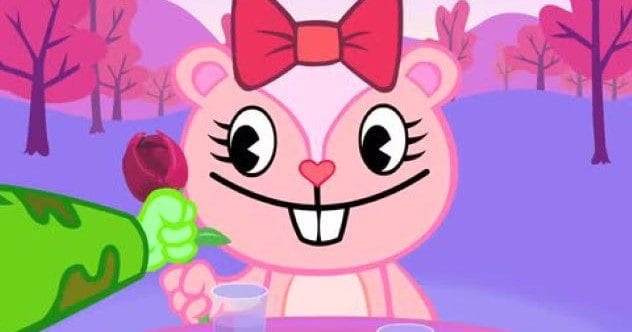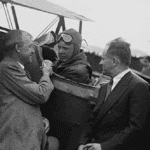Remember life before memes? Before TikTok dances and viral challenges? The internet was a simpler place, yet it was already buzzing with creativity. In the 1990s and early 2000s, a new form of entertainment emerged: web animations. Often made with basic tools like Adobe Flash, these animations were quirky, sometimes profane, and incredibly funny. They were the original viral content, shared among friends and sparking laughter across the globe.
These early animations didn’t just entertain; they laid the foundation for the internet humor we know and love today. They were homemade, raw, and often pushed boundaries, reflecting a unique time when anyone with a computer could share their creations with the world. Get ready for a trip down memory lane as we explore 10 influential early web animations that left their mark on internet history.
10. The Dancing Baby
The Dancing Baby is a true icon of the 90s internet, perhaps one of the most quintessential artifacts of that decade. This early 3D animation showed a baby performing a cha-cha style dance. It might seem simple or even a bit strange by today’s standards, but back in 1996, it was utterly captivating. The animation originated from a group of animators—Michael Girard, Robert Lurye, Tony Morril, and John Chadwick—who were working with 3D animation software Character Studio. They knew they had created something uniquely eerie yet impossible to ignore.
The animation truly exploded in popularity when it was paired with the intro to Blue Suede’s “Hooked on a Feeling.” The Dancing Baby cha-cha’d its way across the burgeoning internet, appearing on news channels, in commercials, and memorably, in the hit TV comedy Ally McBeal. There, it symbolized Ally’s ticking biological clock. Its widespread dissemination was unprecedented for its time, making it arguably one of the very first internet memes to achieve mainstream viral status. The Dancing Baby still evokes strong 90s nostalgia and has even been updated to HD and turned into an NFT.
Memorable Quote: Oogachacka!
9. I’m the Juggernaut B*tch
If you wanted to capture early internet humor, profanity and sheer randomness would be key ingredients. Both are on full display in the video “I’m the Juggernaut B*tch.” Uploaded to YouTube in 2005 by Xavier Nazario and Randy Hayes of My Way Entertainment, this clip was a fan-made dub of an episode from the 1992 X-Men animated series. In it, Randy voices the character Juggernaut, who battles Charles Xavier and his team while spewing a stream of profane and often nonsensical lines.
The parody dub was reportedly created in 2005 just to pass the time and wasn’t shared online until 2006. Once on YouTube, it quickly went viral. Its popularity was so immense that the iconic line, “Do you know who I am? I’m the juggernaut, b*tch,” even made its way into the live-action movie X3: The Last Stand. Though the original upload faced copyright issues with Marvel and was removed, it was re-uploaded by another user in 2007, where it continued to rack up millions of views. My Way Entertainment remains active, a testament to their lasting impact on internet comedy.
Memorable Quote: What else? “Don’t you know who I am? I’m the juggernaut, b*tch!”
8. The End of Ze World
The raw, unpolished nature of early internet animations was a huge part of their charm. These creations were often homemade, using whatever basic equipment the creators could find. “The End of Ze World” perfectly embodies this DIY spirit. This short animation, released in 2003, presents a darkly humorous scenario: what if all countries with nuclear weapons decided to launch them at each other?
Created by Jason Windsor of Albinoblacksheep, the animation tackled a serious subject—global nuclear annihilation—with an absurd and comedic touch. This was particularly resonant as it was released shortly after the U.S. invasion of Iraq, a time when war was a prominent topic. The animation features funny voices, national stereotypes, and incredibly quotable lines. Windsor explained that the idea came from friends imagining how different superpowers would react to incoming missiles. He then created a simple Flash animation with voiceovers and shared it. It eventually landed on Albinoblacksheep and spread like wildfire. Even though it predates YouTube by a few years, its 2008 upload has garnered over 14 million views, showcasing its lasting appeal.
Memorable Quotes: “H’okay, so here’s the Earth.” “Fire ze missiles!” “But I am le tired.”
7. Homestar Runner
At the turn of the millennium, it was hard to browse the internet without stumbling upon Homestar Runner. Even if you didn’t actively follow it, chances are you heard a Strong Bad quote. This web series, centered on the adventures of Homestar Runner and a cast of quirky characters, was a cornerstone of early 2000s internet culture. Its humor was surreal, often parodying pop culture in unique ways. The concept began as a children’s book idea by Mike Chapman and Craig Zobel. Though the book wasn’t published, Mike and his brother Matt Chapman revived the character when they started experimenting with Flash animation.
The Homestar Runner website launched on January 1, 2000. It took about a year to gain momentum, but by 2001, especially with the introduction of “Strong Bad Email” episodes, its popularity soared. In these segments, the series’ main antagonist, Strong Bad, would answer fan emails with sarcastic wit, often mocking their grammar and names. The series became so beloved that the Chapman Brothers would receive angry emails if new episodes were delayed. Remarkably, Homestar Runner sustained itself through merchandise sales, never relying on advertising. The site is still active today, offering a treasure trove of animations and games, a true OG of ad-free internet content.
Memorable Quotes: Too many to list. Seriously, just go watch it!
6. The Badger Song
“The Badger Song” (or “Badger Badger Badger”) is one of those internet phenomena that people either absolutely loved or found incredibly annoying—often both. It’s a simple, repetitive 30-second animation that, on its original website, looped endlessly. If you’re thinking of “The Song That Doesn’t End” from Lambchop, you’re on the right track, but with an added layer of delightful absurdity. The animation features a group of badgers dancing, interspersed with cutaways to a mushroom and then a snake in the desert, all set to an infectious dance beat and a voiceover simply describing what’s on screen.
Created by Jonti Picking, also known for Weebl and Bob, and released in 2003, “The Badger Song” quickly became a viral sensation. Its sheer silliness and hypnotic repetition helped Picking’s website earn a People’s Choice Award. When Picking uploaded it to YouTube in 2008, it continued its reign, amassing over 28 million views. The animation even inspired countless fan-made videos of people mimicking the badgers’ dance moves. It’s a perfect example of how simple, nonsensical humor could capture the early internet’s imagination.
Memorable Quote: “Badger (x12), mushroom (x2), a snake, a snake, ohh, it’s a snake.”
5. Salad Fingers
While many early web animations leaned into bright, silly humor, Salad Fingers took a decidedly different path. This series is visually dark and dreary, exploring equally unsettling and creepy themes. The titular character, Salad Fingers, is a thin, green humanoid with long, spindly fingers, a disturbing demeanor, and apparent psychological issues. In the very first episode, he describes the sensation of rusty spoons against his “salad fingers” as nearly orgasmic. Yes, he’s quite the peculiar fellow. The series follows his unsettling existence in a desolate, seemingly post-apocalyptic world.
Salad Fingers stands out on this list by prioritizing the creepy and disturbing over outright humor. Its virality can be understood in the context of its release in 2004. This was a time when alternative cultures were gaining mainstream visibility—Hot Topic was booming, emo music was on the rise, and darker works like Johnny the Homicidal Maniac were cult hits. So, it’s not entirely surprising that Salad Fingers’ unsettling dystopia resonated, gaining over 110 million YouTube views and screenings at international short film festivals. Creator David Firth has even released new episodes, proving the enduring appeal of its unique brand of creepiness.
Memorable Quotes: “Hubert Cumberdale, you taste like soot and poo!” “I like rusty spoons.”
4. Happy Tree Friends
Happy Tree Friends offers a different kind of disturbing content. It masterfully takes the familiar format of a children’s cartoon, reminiscent of Tom and Jerry or Tiny Toons, and cranks up the violence from cartoonish slapstick to extreme, bloody gore. Imagine Itchy and Scratchy from The Simpsons, but with even cuter characters and a more relentless, cruel sense of depravity. The series thrives on the shock value derived from adorable woodland creatures experiencing and inflicting horrific acts of violence.
Most episodes start innocently, depicting the mundane lives of these cute animals. However, a seemingly minor event—like a balloon popping and triggering a bear’s PTSD, or a beaver tripping and impaling his eye on his lollipop—quickly spirals into a cascade of graphic violence. Created by Rhode Montijo, Aubrey Ankrum, and Kenn Navarro of Mondo Media, the first short debuted in 1999. The cartoon’s popularity grew exponentially, with episodes reportedly viewed 15 million times each month. Happy Tree Friends even spawned its own television series in 2006, won numerous awards, and had characters featured in a Fall Out Boy music video. While no new episodes have been released since 2016, the show hasn’t officially ended, leaving fans hopeful for more G-rated carnage.
Memorable Quotes: The unforgettable sounds of cute creatures meeting gruesome ends.
3. Charlie the Unicorn
Charlie the Unicorn is another animation that tends to sharply divide audiences: you either love it or you absolutely can’t stand it. Jason Steele created this unicorn-themed Flash animation as a birthday gift for his mother after losing many of his belongings in Hurricane Katrina. The animation features Charlie, a pessimistic and world-weary unicorn, who is pestered by two overly cheerful unicorns. They insist they’ve found the way to Candy Mountain, a magical place filled with sweets.
Their adventure becomes increasingly bizarre and nonsensical. The journey culminates in a cruel double-cross: Charlie wakes up in a meadow to discover his kidneys have been stolen by his supposed friends. Steele’s mother proudly posted the animation on Newgrounds, where it gained significant attention. It was later uploaded to YouTube, accumulating tens of millions of views across different uploads. While the high-pitched, annoyingly cheerful voices of the two unicorns grated on some, many viewers identified with Charlie’s cynicism and his unfortunate fate of being taken advantage of. The animation’s popularity was so widespread that it even made a cameo in Weezer’s “Pork and Beans” music video, a testament to its cultural impact despite, or perhaps because of, its dark and surreal humor.
Memorable Quotes: “Charlieeee! Heeeeey, hey Charlieee!” “Shun the non-believer!”
2. Gröûp X
This entry represents a unique collaborative effort between the band Gröûp X and various online animators. Gröûp X presents itself as a Saudi Arabian rap-rock group hailing from the fictional town of Cramshananteen. Their music consists of joke songs featuring vocalists with silly accents performing over simple drum beats. Information about the band itself is somewhat scarce, as their viral fame was largely driven by fan-made animated music videos uploaded to sites like Newgrounds and Albinoblacksheep.
Three videos, in particular, achieved widespread popularity: “Bang Bang Bang,” “Schfifty Five,” and “Mario Twins.” These animations shared a similar visual style, often depicting the band members as stick figures crudely acting out the song lyrics. On YouTube, these videos have collectively garnered millions of views, with “Schfifty Five” alone boasting over 10 million views over 15 years. The combination of funny accents, basic beats, crude animation, and absurd lyrics about carnal desires (“Bang Bang Bang”), bizarre counting systems (“Schfifty Five”), and the indistinguishability of the Mario Bros. (“Mario Twins”) made these videos quirky, highly quotable, and incredibly accessible. As a mark of its peculiar fame, even spell-checkers sometimes recognize the word “schfifty.”
Memorable Quote: “I know how to count all the way to Schfifty Five, and I can do it faster than you can say ‘poopty peupty pants.’”
1. The Spirit of Christmas
“The Spirit of Christmas” shares a similarity with The Dancing Baby in how its virality was less about sheer view numbers and more about who saw it and spread it. The original “Spirit of Christmas” is a 1992 short animation made with construction paper. It depicts four boys bringing a snowman to life, but this Frosty turns out to be a violent monster, killing two of the boys. The surviving boys then seek help from Jesus, who defeats Frosty. The boys conclude that the true meaning of Christmas is presents.
This crude animation was discovered by Brian Graden, then a Fox executive. He was so impressed that he commissioned its creators to make a sequel that he could send as a video Christmas card. This second short featured Jesus and Santa Claus battling over the true meaning of Christmas, with the boys ultimately deciding to become Jewish to get more presents during Hanukkah. The key detail? The creators of these shorts were Trey Parker and Matt Stone, who would go on to create South Park. Graden’s interest led Parker and Stone to develop their characters and concept into a TV show pitch. While Fox initially passed (reportedly due to a talking piece of feces character), bootleg copies of the animations spread online and eventually reached Comedy Central, which greenlit the series. South Park premiered in 1997 and became an instant cultural phenomenon. In many ways, “The Spirit of Christmas” was a blueprint for much of the early internet animation that followed: crude art, vulgar but quotable dialogue, and dark humor.
Memorable Quote: “Oh my God! Frosty killed Kenny!”
These ten animations are just a snapshot of a vibrant and creative period in internet history. They were often rough around the edges, made with limited tools and budgets, but they possessed an undeniable charm and originality. They proved that anyone with an idea and a bit of technical skill could reach a massive audience, long before social media platforms streamlined the process.
From the unsettling dance of a 3D baby to the profanity-laced adventures of cartoon characters, these early web animations entertained millions and, in many ways, helped to define the irreverent, boundary-pushing, and highly shareable nature of internet humor. They were the pioneers, the trailblazers who showed us the potential of this new digital frontier for comedy and storytelling.
Which of these early web animations do you remember most fondly? Did we miss any of your old favorites? Share your memories and thoughts in the comments below!










